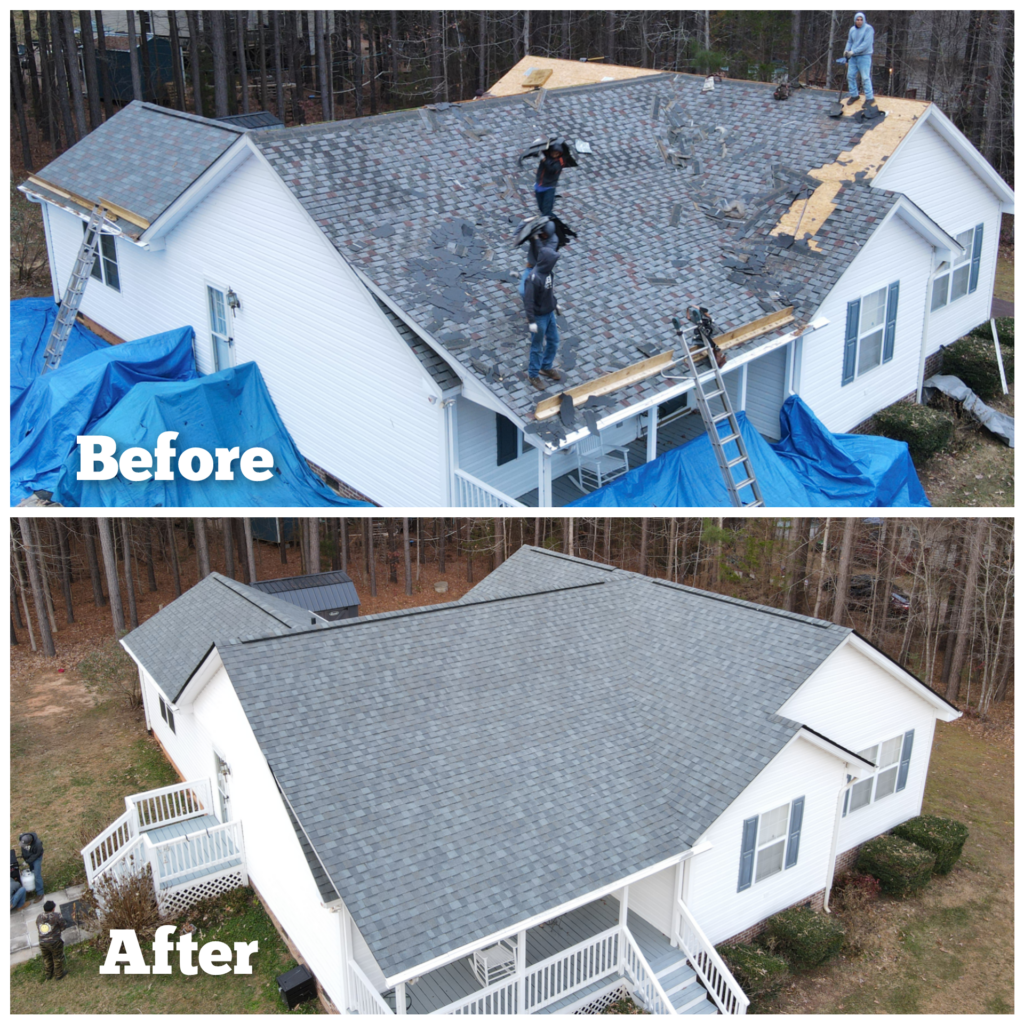- By ABJ Roofing
- Roofing Technology
- 0 Comment
What Is Roof Flashing?
Roof flashing is a crucial part of a roofing system that prevents water from getting into the house at joints and edges. Flashing is installed around areas prone to leaks, such as chimneys, skylights, vents, and roof valleys and commonly made from copper, aluminum, or galvanized steel. It directs water away from these spots, ensuring it flows off the roof rather than seeping inside. Making sure roof flashing is correctly installed and maintained is crucial to prevent water damage and prolong the roof’s life. Our team has been roofing since 1993 and can help you fix your roof or completely replace it.
Types of Roof Flashing
- Step Flashing: Used along the edges of roofs and walls, step flashing is installed in a “step-like” pattern to create a barrier against water intrusion.
- Chimney Flashing: This type of flashing is used around chimneys to prevent water from entering at the joint between the chimney and the roof.
- Valley Flashing: Valley flashing is installed in roof valleys, where two roof planes meet, to guide water away from this vulnerable area.
- Vent Pipe Flashing: Used around vent pipes and other protrusions through the roof, vent pipe flashing creates a watertight seal to prevent leaks.
- Drip Edge Flashing: Placed along the roof edges, drip edge flashing helps direct water into the gutters and away from the fascia, helping to prevent wood rot.
- Skylight Flashing: Skylight flashing is used around skylights to prevent water from entering at the joint between the skylight and the roof
- Wall Flashing: Used at the intersection of a roof and a vertical wall, wall flashing prevents water from entering this junction.


FAQs
How long does flashing last on a roof?
Roof flashing, when properly installed and made from durable materials like copper or aluminum, can last between 20 to 40 years or more. However, exposure to harsh weather conditions, poor installation, and lack of maintenance can shorten its lifespan. Regular inspections and timely repairs can help extend the life of flashing and maintain the integrity of the roof.
What happens if you don’t have roof flashing?
Without roof flashing, water can penetrate the roof at vulnerable areas such as valleys, chimneys, and skylights, leading to leaks and water damage inside the home. Additionally, without flashing to direct water away from the roof edges, the fascia and soffit can be damaged, and water may infiltrate the walls, causing structural issues and mold growth.
What are the benefits of flashing a roof?
Roof flashing provides essential protection against water intrusion at vulnerable areas of the roof, such as valleys, chimneys, and skylights. By directing water away from these areas, flashing helps prevent leaks and water damage inside the home. Properly installed and maintained flashing can extend the lifespan of the roof and ensure its overall integrity.

Contact Us Now
or Call (919)-671-4418
We're standing by to discuss your roofing project.

